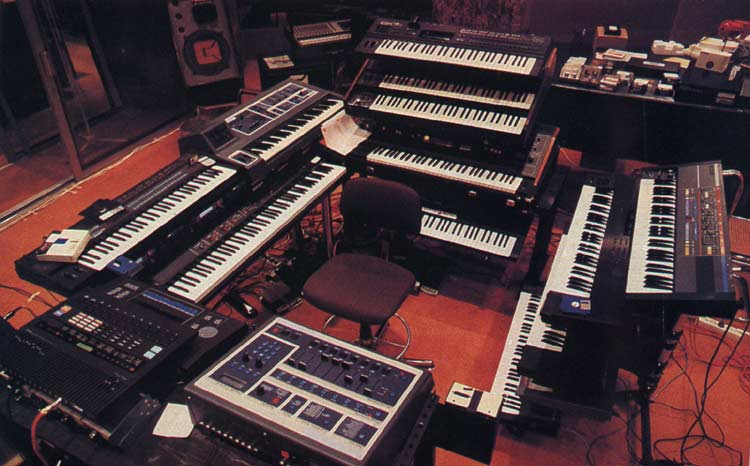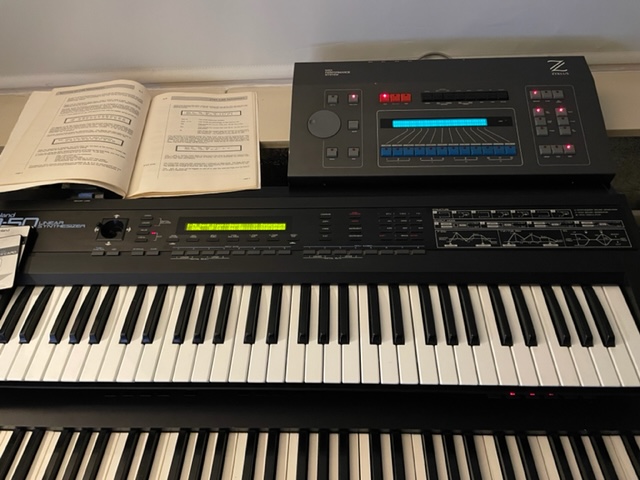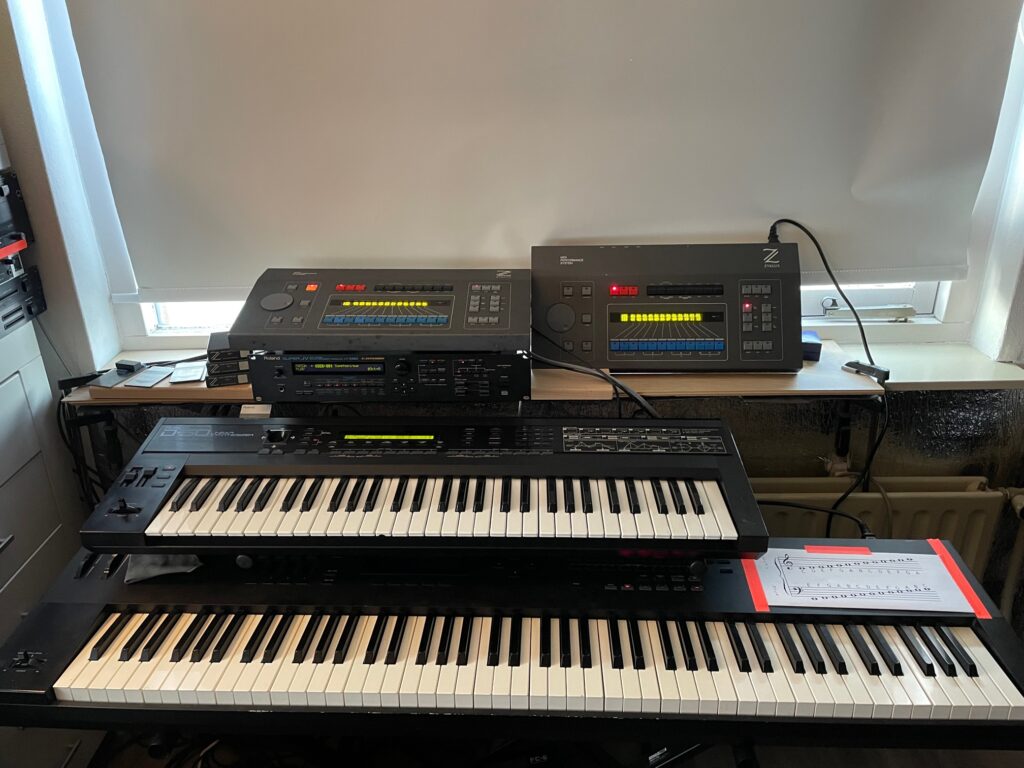Vangelis’ record ‘Direct’ has a significant meaning to me, especially because of its shift from deep analog to more modern digital synthesis.
His sound completely changed and there’s very little of his ‘Nemo’ sound left. No VP-330 strings or choirs, Rhodes EP and only the slightest touch of a CS80 here and there.
In stead the record is full of recognisable Emulator II, Roland D-50 and Prophet VS sounds among many others.

The opening track “The Motion of Stars” features a very strong sequence based sound over which layers of strings are played. The sequence will transpose and change patch on a whim.
These are some of the key features of the Zyklus MPS, a “Midi Performance System”. A rare enigmatic device. Only around 60 were made, only 40 were sold.
Vangelis used two though not at the same time. This is what I’ve been able to find out by talking to the people involved – a caveat applies; all this happed some 36 years ago and details are in some cases understandably not that clear anymore.
In preparation for a concert, Vangelis requested a unit form the developers who were not quite done yet, so he received an early model with some clear instruction on what not to use, as this would crash the machine. It’s likely that this machine was taken back to the UK by Bill Marshall in order to finsih and a more recent production model was then either taken to or sent to Athens.
According to Casey Young, the second unit was used in the studio. You can see it on the lower left, just below the Yamaha RX-5 drum computer.

That machine was then used for the production of the record “Direct”, although only for a few tracks as Bill and Pete already started developing the Direct Machine which much better suited Vangelis, as it was a custom design for him based on the ideas Vangelis and Bill hammered out during that time.
Vangelis used it sparingly from 1987 until late 1988 where it made an apperance that the Olympic Flame Ceremony, where Vangelis was providing the music. A video of “40 Braves” can be seen on Youtube where the second Zyklus unit is visible. From that point on, Vangelis relied on the Direct machine and the Zyklus went with Casey.
During the years where Vangelis had the Zyklus, a number of records were made that never saw the light of day, such as Inner Data and Symphony No 3. It’s unknown in how far the Zyklus can be heard on those reocrds.
We only know for sure that The Motion of Stars is the Zyklus, and I believe that it’s also the sequence on Metallic Rain and on Genevive from “Page of Live”, as these tracks have one thing in common: the sequences were coming from a Prophet VS Synthesizer. In every picture I’ve ever seen of Vangelis Zyklus, only 1 midi out was connected, and from the sound of it, I believe it to have been his Prophet VS module. Any of this is speculation though. In most cases I believe he used his DX7 as input trigger.
About maybe a year ago I noticed Pete Kellock, one of the Zyklus developers, replying to someone on a youtube comment regarding the schematics of the original device. I figured I’d give it a shot as well and contacted him and he freely gave me the schematics and source code of the original Zyklus. At that point, my intention became to create a clone as it would be impossible to get an original one anyway. And with the source code, perhaps newer features or re-platforming can be done.
By the end of last year, a small or maybe rather large miracle happened and I came into possession of Vangelis’ actual studio used unit, which I bought from Vangelis’ then Synth Tech Casey Young (the voice you hear in Intergallactic Radio Station).
An historic piece of equipment and although I did take detailed pictures of everything inside and created backup dumps from the Roms, I will not use it for experimentation, so I will continue building a clone.
As mentioned above, this particular unit came after he used a pre-production unit for the concerts, however, in comparing notes with other Zyklus users, even this unit is not quite 100% as most others. Eventhough the serial is relatively high, the OS was an older version. Apparently, most other units had version 1.2A running (EPROMS with dated and red stickers), while this one had an earlier version 1.2. Also, the mounts for the Power Supply board are different – metal screws with rubber bumpers, rather than nylon standoffs and some other small differences.
Through Pete Kellock, I got a second unit, which was basically damaged due to moist. During shipment to me, the nylon PCB standoffs broke, causing the heavy power supply unit to go on a rampage within the unit. I’ve detailed the ressurection process in the blog and this unit too now works nicely again. This is the unit I’m using for testing and comparing with the clones while leaving the Vangelis’ unit as is.

